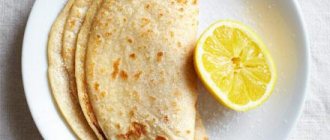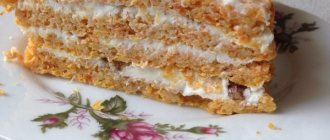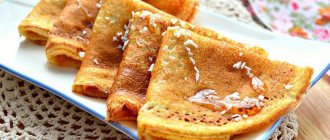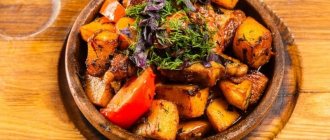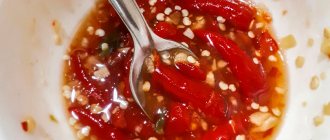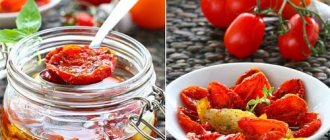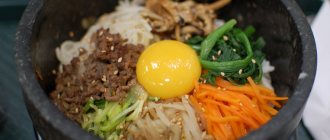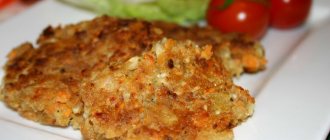General information
Topographic map of Morocco
Morocco is located in northern Africa; There is a territorial dispute over the territory southwest of Morocco with Mauritania and the partially recognized SADR. Geographically, Morocco is divided into plains, mountains (mainly represented by the Atlas system) and the Sahara Desert; In most areas there is a significant variation in temperatures during the day[2]. Wheat, corn, vegetables and fruits are cultivated on the fertile plains, as well as sheep, goats, cows and chickens[1][3].
The Berbers are the original inhabitants of Morocco and the entire Maghreb, but in the 7th century the Arabs supplanted them and gradually Islamized the territory of present-day Morocco[1][3]. The Arabs introduced cinnamon, ginger, saffron, cumin and cumin into Moroccan cuisine; a mixture of sour and sweet tastes; as well as the manner of adding honey, sugar, fruits and dried fruits to meat dishes[1]. Other ancient influences on Moroccan cuisine include Phenicia, Carthage, Rome and Byzantium[1]. On the other hand, Moroccan cuisine lacks Turkish influence (Morocco is the only major Arab country that was never part of the Ottoman Empire), which is why Moroccans do not eat baklava or stuffed vegetables.[4]
Main Ingredients
Tagine with olives is a typical Moroccan dish.
The average Moroccan gets 2/3 of his calories from grains, mainly wheat, but also barley[3]. Wheat is used to prepare couscous, bread, and pastries; it is added to soups and porridges are prepared from it (in addition to wheat, there are also barley soups and porridges)[3]. Couscous is so important in Moroccan cuisine that in the central part of the country it is often referred to simply as "food".[5] Rice is a rare side dish on Moroccan tables; puddings are prepared from it and stuffed into poultry and pies[5]. Legumes are an important source of protein: lentils, chickpeas and garden beans: they are added to stews and spreads[6].
The most commonly used meats in Moroccan cuisine are lamb and chicken, as well as pigeon meat; They fish in coastal areas[3]. Beef and veal are more popular than in other Arab countries[3]. Milk is found mainly in the form of kefir, raeb, or soft cheese made from sheep, cow, or goat milk; yogurt is unpopular[3].
Moroccans’ favorite fats are olive and clarified butter (changes)[6]. Spices are added to the change and it is kept for several months[6]. In the southern regions and among wealthy Moroccans, argan oil is popular[7].
Popular vegetables in Morocco are tomatoes, bell peppers, zucchini, artichokes, cauliflower, fennel bulbs, less popular are eggplants, leafy vegetables, cabbage, turnips and pumpkin[6]. The most common fruits on the Moroccan table are grapes (fresh or in the form of raisins), plums, peaches, apricots, quinces, pomegranates, lemons and oranges. Lemons are fermented and added to salads and stews[5]. Olives are extremely popular, and they are eaten not only as a snack, but also added to dishes[6].
Moroccan dishes add a lot of herbs, especially coriander, and seasonings[6].
- Mint tea is the most important drink in Morocco.
- Moroccan meat stewed with dried fruits and sprinkled with almonds
- Moroccan tagine
What do they eat in Morocco? Moroccan cuisine
Moroccans love to eat tasty and satisfying food. So much so that there is even a proverb : “All people eat to live, but Moroccans live to eat
.
Cooking takes several hours, so truly Moroccan food can only be tasted in the family. If I were to define Moroccan food in general, I would say: “melts in your mouth”
.
The people are hospitable, try to make friends with some family, they will definitely invite you for couscous.
Couscous
Prepared every Friday, it is a festive, family dish. Friday is a holy day for Muslims. They start early in the morning and are served around lunchtime, at one o’clock in the afternoon, meaning the preparation takes several hours. Couscous must be eaten hot, so the whole family knows when to gather at the table.
Moroccan families are large, the size of the special couscous pans is huge, and they mix in basins. The recipe is different in each family, but the main ingredient is couscous. It is steamed in a couscous maker (steamer), dumped into a basin several times and stirred by adding olive oil (home-pressed). The mixing process is similar to fluffing pillows. As a result, the cereal becomes airy and crumbly. Of course, by hand.
The second component of the dish is either meat or chicken. Let's say today we have couscous with chicken. We put it to cook in a separate pan. I want to clarify. The chicken is domestic; in Morocco they do not eat frozen broilers that have never seen the sun. The chickens in the store are alive, they walk around in the pen, they peck at the grains until you come for it. This chicken has a completely different taste than what we, residents of big cities, know.
And the third part is vegetables. Carrots, turnips, pumpkin, zucchini, cabbage, onions, chickpeas. They are placed at the end, in chicken broth. Fresh coriander and parsley are chopped finely - finely with a special chop. Add spices: raisins, turmeric, ginger, cayenne and black pepper.
When everything is ready, the cereal is laid out in a heap on a large dish, pieces of chicken and chopped vegetables are laid out on top. And pour over the thick broth obtained by cooking chicken and vegetables. The vegetables are colorful, cut and arranged into couscous like a painting. The dish looks and smells mouth-watering. The family is already assembled and waiting.
It is believed that food tastes better if you eat it with your hand. According to Muslim rules, they eat with their right hand, take couscous, squeeze it in their palms several times, it turns into a ball, and puts it in their mouth. Children and guests are given spoons.
Wash down the couscous with yogurt.
Couscous is prepared by women, usually there are several of them in the family, all together. However, practically everyone, with rare exceptions, knows how to cook well. Exactly, good. Apparently, infancy spent with mom in the kitchen bears fruit. For example, tazhIn is often done by men. They start at eight o'clock in the evening and eat by midnight. In Morocco, eating a big meal late at night is normal.
TazhIn
- this is everything that is prepared in a special ceramic container with a cone-shaped lid, which is called a “tagine”. On charcoal, on a ceramic stand - a stove. That is, tagine is actually a method of preparation, and not the name of the dish. You can make a tagine from meat, chicken, fish, seafood with vegetables and spices, or you can only use meat with prunes and almonds, or just fish with onions and lemon.
This is a fish tagine, the beginning of cooking. Now let's close the lid and wait.
The mussel tagine is ready and ready to enjoy.
From chicken.
From the minced meat, start cooking.
All products and seasonings are added at once, covered with a lid and simmered over low heat for two hours, or even more, until there is no liquid left inside. No water is added, just a little vegetable oil to the bottom, everything is cooked in its own juice. Products are not placed inside the tagine haphazardly, but laid out in a beautiful composition. When the tagine is ready, you open the lid, and in front of you is not just food, but a picture - an ornament.
Of course, there is no tagine for one person (exists only in tourist restaurants). They all eat from the same tagine, with fresh bread. They take, precisely, a piece of bread instead of cutlery. Since everything was stewed in a ceramic pot over coals, the taste! Melts in your mouth!
Do you know where you can try delicious tagines? In shops near the highway. They were put on coals there a long time ago, not for tourists, but for locals passing by by car.
Bread
In Morocco it is very tasty and they only eat it fresh and hot. Basically, these are flat cakes, but not flat ones, but made from yeast dough. There are bakeries in every quarter. They used to bake it at home, but even now all the bread is homemade, just from families where they make it for sale. Bread is baked several times a day.
Cooled bread is not bread. They throw him away. We dry the crackers, and they just bake new ones.
In general, the attitude towards food in Morocco for those coming from Russia is initially shocking. Everything that is not eaten is so tasty, they simply throw it away. Nothing goes into the refrigerator to be reheated later. And they throw away the bread too. Apparently, there has never been a famine in Morocco, the land is fertile and feeds all the people. Even the poor are not hungry. Moroccans are fed not only by the land, but also by the Atlantic Ocean.
People who grew up on the ocean couldn’t understand how I always buy frozen fish in a cellophane wrapper at home. For them, the fish of the morning catch is for lunch at noon, and the fish of the evening catch in the evening. And there is no other way.
Fresh fish
, baked on the grill or fried in oil - there is nothing tastier!
The ease of preparation only emphasizes its taste. This feast takes place on the ocean shore, where you choose what kind of fish you want or who knows what else, and they will immediately cook everything for you on the grill. And served with lemon and Moroccan salad
. It seems like an ordinary salad of tomatoes cut into plastic and onions. But with a dressing of lime, black pepper and olive oil, served with fish, it becomes a delicacy.
And the most experienced of tourists, the French, mostly (they are at home in Morocco), go to the port (it is always close to the beach) and buy fish from fishermen unloading their catch. They return to the beach with her. For a little money they will cook it, seat you at the table, and serve you a salad. Yes, the French, like the Moroccans, love to eat well is a national trait.
Traditional drink - mint tea
. Drinking tea is a separate social action. Men are going to sit for tea in a cafe, women are going to sit at home. The kettle with brewed tea is small and there is always one for everyone. Usually tea drinking occurs around five in the evening.
They say that Moroccan mint tea is strong as life, sweet as love, frothy as the sea and soothing as death - “Le th? Est dur comme la vie, sucr? Comme l'amour, mouss? comme la mer et doux comme la mort.”
By tea, Moroccans mean a completely different drink than we are used to. First, green tea is boiled, boiled, boiled for fifteen minutes or more, and at the end add mint and sugar. Mint comes in different varieties, choose according to your taste, you can mix and brew a mix.
Sugar in Morocco does not come in small cubes. It is made in bars; there will probably be twenty of our cubes in a bar.
Here is a sugar bowl in an ordinary family in Morocco.
So, three or even more of these bars are placed on a small teapot. The tea turns out very, very sweet and fragrant due to mint. They drink it in small glasses, rarely more than two at a time. Tea is so sweet and strong that it is not a drink, but a food.
Properly brewed tea should foam when poured. About one third of the small glass is filled with foam. There is a proverb: “Tea without foam is like a house without a roof.”
—
“Le th? sans mousse c'est comme une maison sans toit"
.
And they pour it, raising the kettle high, until it falls, it cools down a little, and you can try it.
I’ll tell you what Moroccan women drink tea with, and I’ll tell you about all sorts of delicacies in the sequel, because the article was already big,
“but it flowed down my mustache, but didn’t get into my mouth.”
Similar
Typical dishes
Tea poured from above
Breakfast is served with cheese, bread, bean paste and pastries: “begrir” pancakes, “rgaef” puff pastries; A common breakfast drink is Maghreb mint tea: green, with lots of sugar and sometimes orange blossom.[5] Lunch is the heaviest meal of the day, it includes soup, several salads, chicken, lamb or fish tagine with couscous and fruit or dried fruit, as well as bread[5]. Thick soups are served for dinner, and in the evening you can see salads, couscous and tagines on the Moroccan table[4].
Couscous is usually served with lamb tagine with raisins and chickpeas, but in coastal regions it is replaced by fish tagine with turnips, and the capital has its own version - caramelized onions and honey are added to the lamb [4]. “Couscous with seven vegetables” (French couscous au sept légumes
): carrots, onions, turnips, tomatoes, bell peppers, zucchini and pumpkin[4]. Regional varieties of couscous differ in size: northern couscous is small, southern couscous is large[4].
Mint tea is the most important Moroccan drink; it is drunk both without a special occasion and with guests; in the latter case, preparing tea involves pouring it from a teapot into a glass from a meter high[5]. Sweets are served with tea, in particular, “kab-el-ghazal”, small cookies with grated almonds[8].
On holidays they serve pastilla - a puff pastry pie stuffed with pigeons, almonds and eggs[4]. Pastilla came to Morocco from Spain either in the 16th century along with the expelled Moriscos, or earlier[4]. In the northern regions of Morocco, lemons are added to the pastilla, and in the south they are sweetened[4].
Another popular holiday dish is whole spit-roasted lamb, meshvi; in cities, pieces of lamb are often fried instead of a whole lamb[4].
- Begrir
- Moroccan pastilla
- Tajines at a market in Marrakech
Leather Products
By the way, not only shoes are made from leather here. In general, local leather products are distinguished by their excellent quality and affordable price, and the material itself is amazingly soft and craftsmanship, because this craft has been practiced in Morocco for a long time.
Therefore, if you are a connoisseur of high-quality and original leather products, this is definitely the place for you! Jackets, bags, wallets, belts - you name it. You can choose a classic product, or you can look for an unusual one, made of bright leather, with a national ornament.
For leather, you should go to the leather quarter of Fes, Essaouira, and the Habbous district (Casablanca). However, near almost every major hotel, if you search, you will find a specialized store. Don’t forget that in many of them you can also bargain, and in the atelier, which is located in most of the stores, the chosen item will be customized for you, or even in a couple of days they will sew a new one from the catalog.
Eating
In most families, one main course and a salad or soup are prepared for one meal[1]. Harira lentil soup is a popular non-staple dish and is also used to break the fast during Ramadan[1]. Visiting restaurants is not accepted[10].
Bread, usually a white flatbread, is served at the table and used for dipping into sauces[1]. Soups are eaten with a spoon[4].
A traditional meal involves the eaters being seated at a low table on cushions[1]. It is customary to take food with the thumb, index and middle fingers of the right hand, while couscous is rolled into balls[1][4]. At the end of the meal, fresh fruit is brought out, followed by mint tea (green with mint leaves)[8].
Moroccan fast food - fried fish and kebab[10].
- Harira with vermicelli
- Tea with sweets
- Men sitting on cushions at a Moroccan table
Local cosmetics
Local skincare cosmetics based on natural oils (roses, argan, olives) and herbs, most of which are also made according to ancient recipes, enjoy well-deserved popularity among the fair sex.
Creams, lotions, soaps, shampoos - anyone can choose a product to suit their taste here. Just don’t forget to first ask the seller in detail about the nuances of using these cosmetics; some of them are quite unusual for Europeans.
They also bring from Morocco:
- forged lamps;
- fez hats;
- local rose and gray wine;
- various spices;
- cotton shawls in stunning colors;
- decorative mirrors;
- Barbary tea;
- wooden accessories (boxes, chess sets, chairs);
- fig vodka;
- national attire - dzhelabiya.
Festive table
The festive meal, “diffa”, consists of 6-20 dishes: first served is a large pie made from puff pastry pastilla with a diameter of up to half a meter, then steamed lamb shoulders and/or ribs “shua”, or lamb shish kebab “meshvi”, tagines with fish , poultry and lamb, the couscous finishes serving[1][4]. For festive feasts in Moroccan cuisine, there are many special dishes: lamb tagine with plums and raisins “Mrouzia”[en], lamb with almonds ( tfaya
) and so on [4].
99 percent of the country's population are Sunni Muslims; they fast during Ramadan[11]. The first meal after sunset, iftar, includes dates and harira, a lentil soup[11]. On Eid al-Fitr and Eid al-Kebir, couscous is served; Moreover, on Eid al-Kebir it is often accompanied by a sheep's head, carrots and garden beans[11]. Couscous is served on all holidays, and even after the funeral, the family of the deceased is given couscous to distribute to the poor[11].
- Set table for Eid al-Fitr celebration
- Meshwi at a Moroccan wedding
- Mruzia
Notes
- ↑ 1234567891011
Oxford, 2014, p. 1555. - Oxford, 2014, p. 1554.
- ↑ 1234567
Albala, 2011, p. 119. - ↑ 12345678910111213
Albala, 2011, p. 122. - ↑ 12345678
Albala, 2011, p. 121. - ↑ 123456
Albala, 2011, p. 120. - Albala, 2011, p. 120, 124.
- ↑ 12
Oxford, 2014, p. 1556. - Albala, 2011, p. 121-122.
- ↑ 12
Albala, 2011, p. 123. - ↑ 1234
Albala, 2011, p. 124.
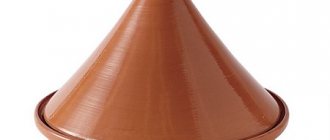
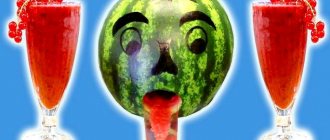
![Cherry jam with pits for the winter - recipe with photos [8 recipes]](https://edelight.ru/wp-content/uploads/varene-iz-vishni-s-kostochkami-na-zimu-recept-s-foto-330x140.jpg)
